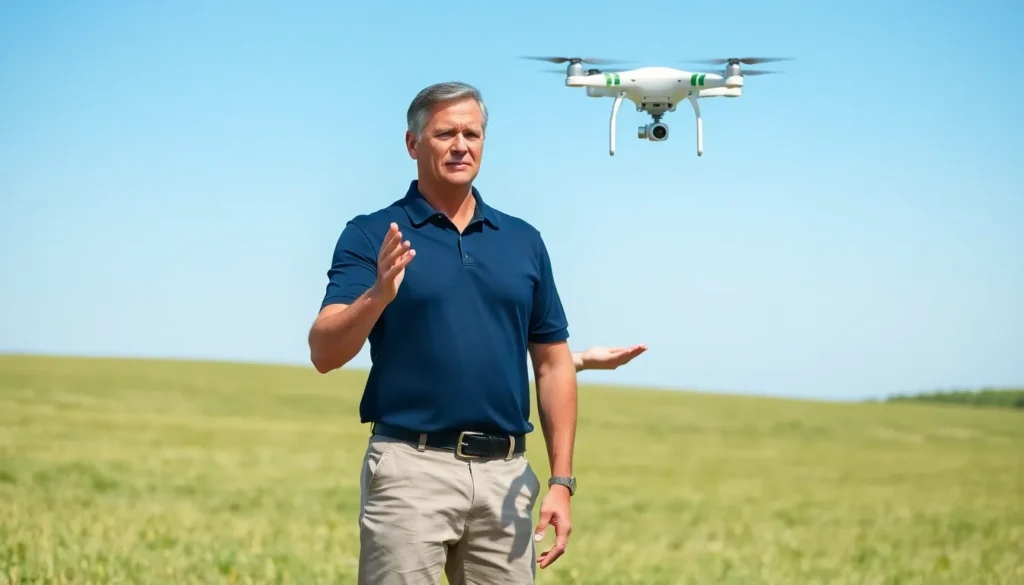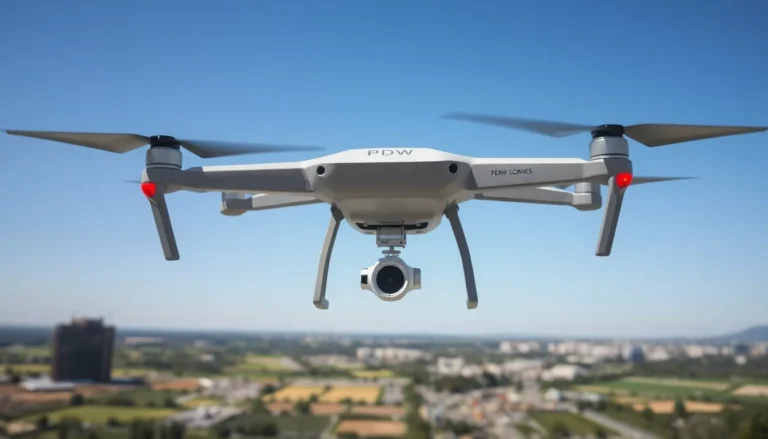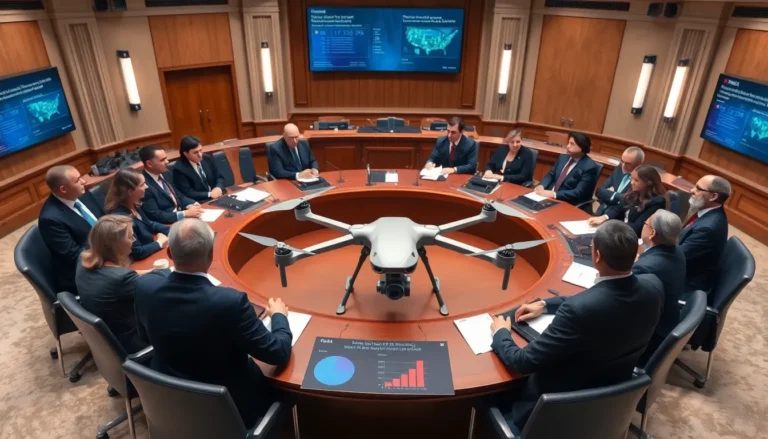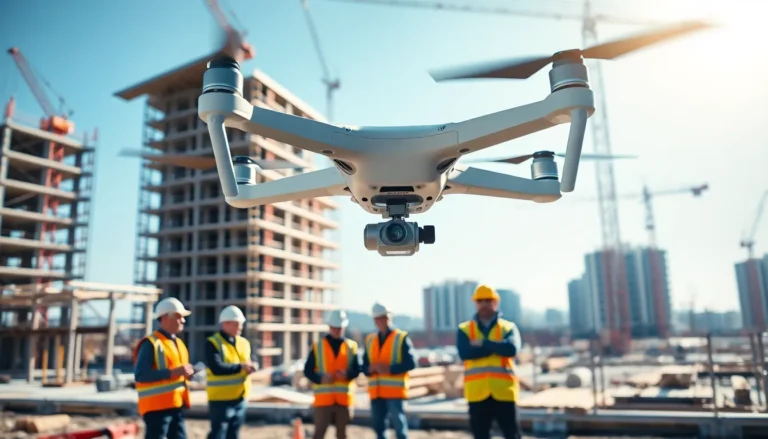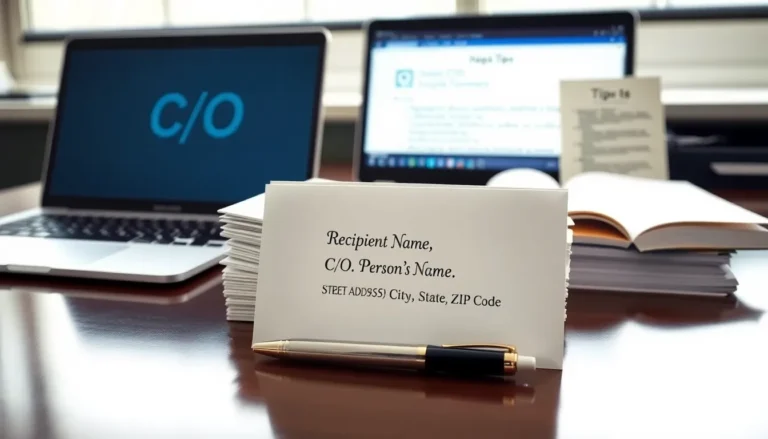As drones soar in popularity across various industries, ensuring safety has become a top priority. With their ability to capture stunning aerial footage and assist in tasks from delivery to agriculture, the need for clear regulations is more pressing than ever. These guidelines not only protect the airspace but also safeguard people and property on the ground.
Navigating the complex landscape of drone safety regulations can be daunting for both enthusiasts and professionals. Understanding the rules helps operators avoid penalties and promotes responsible flying. From registration requirements to no-fly zones, staying informed is essential for anyone looking to harness the power of drones safely.
Table of Contents
ToggleOverview of Drone Safety Regulations
Drone safety regulations aim to ensure the safe operation of unmanned aerial vehicles (UAVs) within national airspace. Various entities, including the Federal Aviation Administration (FAA), enforce these regulations in the United States.
Key Regulations
- Registration Requirements
- Operators must register drones weighing more than 0.55 pounds before flying.
- Registration involves providing personal information and paying a fee.
- Flight Restrictions
- Drones cannot fly higher than 400 feet above ground level.
- Flights must occur within the pilot’s line of sight.
- No-Fly Zones
- Drones must avoid restricted areas, such as airports and military bases.
- Operators should familiarize themselves with local laws regarding drone use.
- Operational Guidelines
- Operators must maintain separation from manned aircraft.
- Drones should not fly over people or moving vehicles without special waivers.
- Night Operations
- Flying drones at night requires specific lighting requirements for visibility.
- Pilots must possess a Part 107 Remote Pilot Certificate for night operations.
- Insurance and Liability
- Many operators consider obtaining liability insurance to cover potential damages.
- Insurance often enhances accountability and responsible operations.
- Local Regulations
- Cities and states may impose additional drone regulations.
- Operators should check local ordinances for compliance.
Adhering to these regulations promotes safe flight operations, protecting both individuals and property from potential risks associated with drone use.
Importance of Drone Safety Regulations
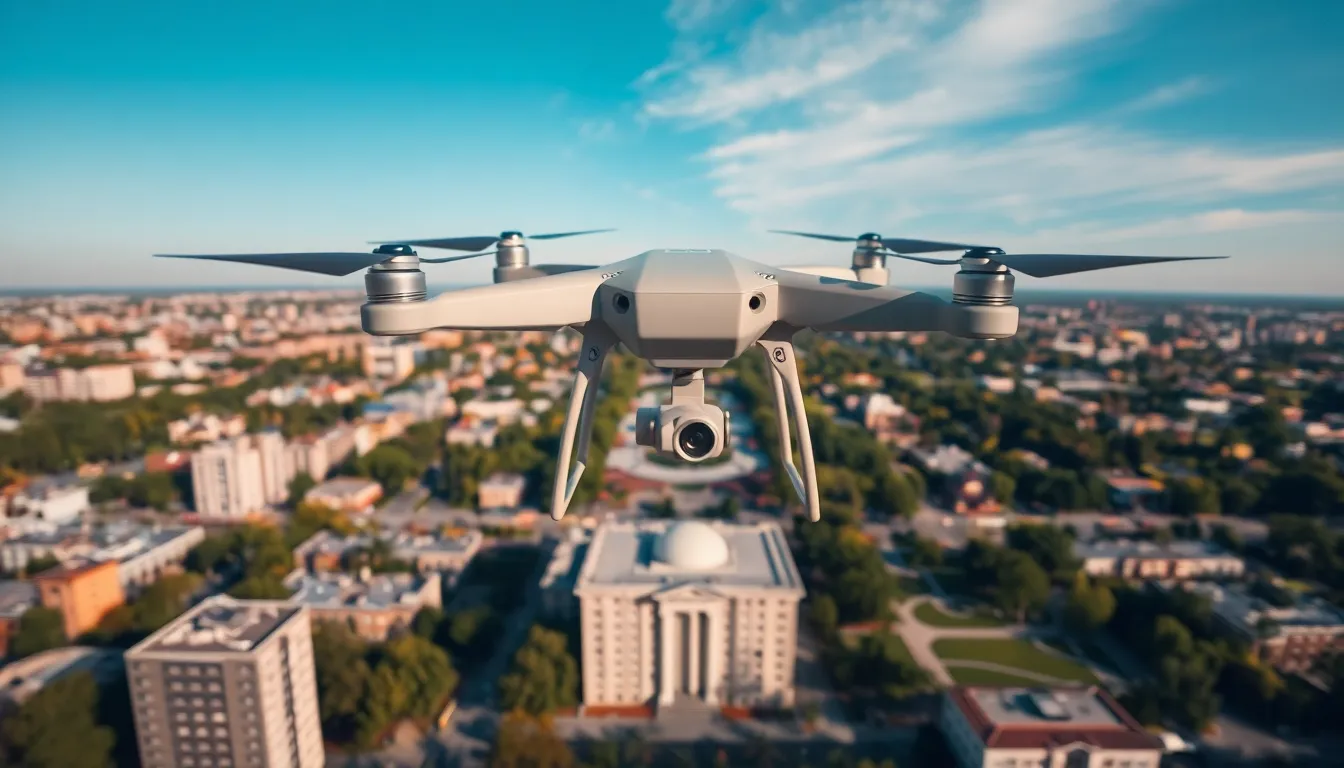
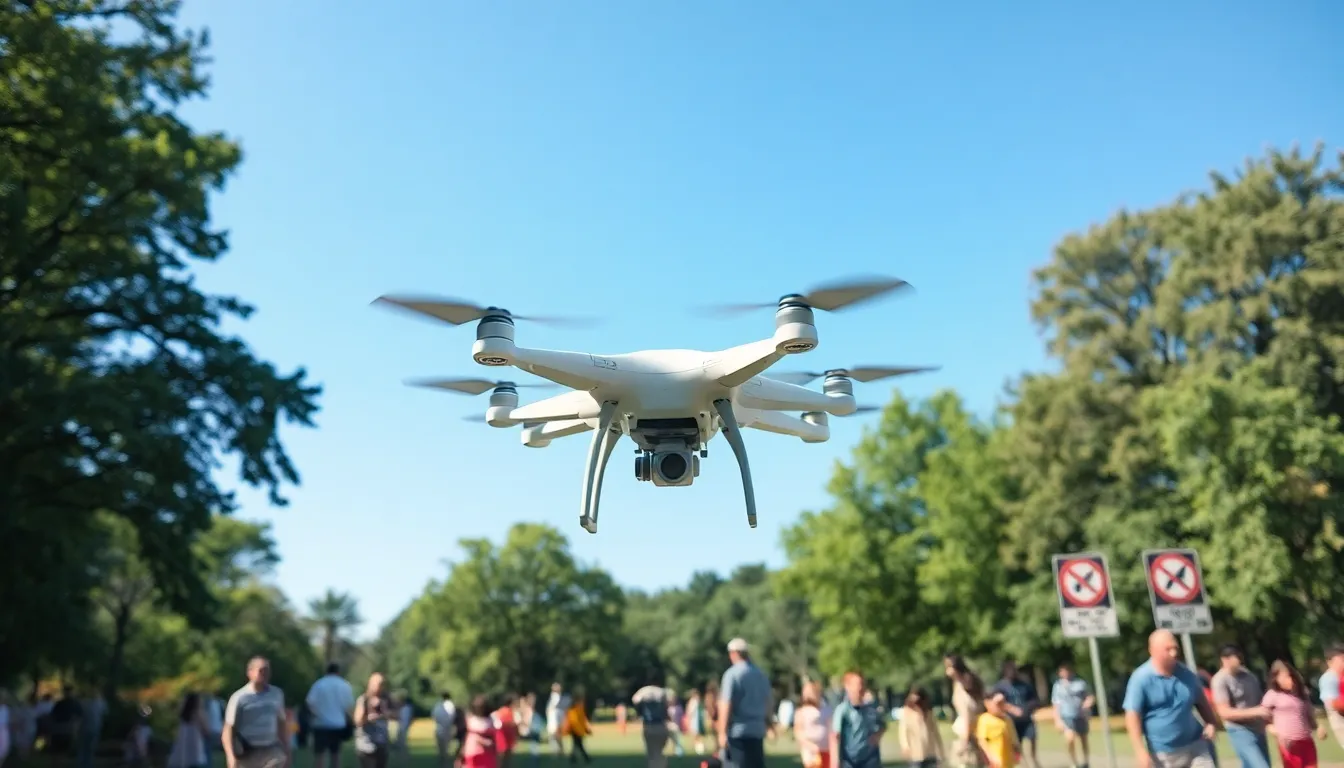
Drone safety regulations play a critical role in protecting communities and maintaining a safe airspace. Understanding and complying with these regulations ensures responsible drone operation and minimizes potential hazards.
Protecting the Public
Protecting public safety is a primary objective of drone safety regulations. These rules help prevent accidents that may arise from reckless flying, collisions with people or property, and unauthorized access to sensitive areas. By enforcing restrictions on drone usage in populated regions and near critical infrastructure, authorities reduce risks associated with drone operations. For instance, regulations prohibit flying over gatherings of people, schools, or hospitals, mitigating potential harm in case of malfunctions.
Ensuring Airspace Integrity
Ensuring airspace integrity is vital for the safety of both drones and manned aircraft. Regulations mandate maintaining safe distances from airports and flight paths of commercial airlines, preventing dangerous encounters. Operators must keep drones below 400 feet and within line of sight to remain aware of their surroundings. Organizations like the FAA regularly monitor compliance, which maintains trust in the airspace system. Consistent adherence to airspace integrity regulations promotes safer skies for all users.
Key Components of Drone Safety Regulations
Drone safety regulations encompass several critical components to ensure safe aerial operations across various environments. These regulations govern everything from registration to operational limitations to promote responsible use of drones.
Registration Requirements
Operators must register drones weighing more than 0.55 pounds with the Federal Aviation Administration (FAA). Registration entails providing personal information and paying a nominal fee, usually around $5, valid for three years. Registered drones must display the unique registration number on the exterior, ensuring accountability. Failure to register may result in penalties, including fines and confiscation of the drone.
Operational Limitations
Operational limitations aim to safeguard both drone operators and the general public. Key restrictions include:
- Altitude Restrictions: Drones cannot exceed an altitude of 400 feet above ground level.
- Line of Sight: Operators must maintain a visual line of sight with their drone at all times during flight.
- No-Fly Zones: Drones must avoid designated no-fly zones, including airports, military bases, and populated areas.
- Manned Aircraft Separation: Drones must maintain a safe distance from manned aircraft to prevent collisions.
- Night Operations: Specific lighting requirements are essential for night flying, and operators must possess a Part 107 Remote Pilot Certificate.
Adhering to these operational limitations significantly reduces risks and fosters a culture of safety within the drone community.
Current Challenges in Implementing Regulations
Implementing drone safety regulations presents several challenges. The rapid evolution of drone technology complicates efforts to enforce current standards and ensure compliance.
Technology Advancements
Technology advancements in drone capabilities outpace regulatory updates. Drones equipped with sophisticated features, such as autonomous flight modes and high-resolution cameras, introduce complexities in identifying safe operational boundaries. The integration of artificial intelligence (AI) enhances flight decision-making but raises concerns about accountability during unauthorized flights. Advanced drone technologies often require tailored regulations to manage these unique risks effectively.
Compliance and Enforcement
Compliance with drone regulations poses significant hurdles for enforcement agencies. Monitoring airspace for unauthorized drone activity demands substantial resources. The decentralized nature of drone operations, coupled with the ease of access to drone technology, complicates regulatory oversight. Furthermore, penalties for non-compliance often lack sufficient deterrent effects, allowing repeated violations to occur. Effective education on regulations for operators also remains crucial, as misunderstandings about legal requirements can lead to inadvertent infractions.
Future Trends in Drone Safety Regulations
Emerging trends in drone safety regulations focus on addressing technological advancements and operational complexities. Regulatory bodies adapt to innovations like autonomous flying and AI integration, reshaping the regulatory landscape.
- Increased Regulation for Advanced Technologies: As autonomous drones become prevalent, regulators may impose stricter guidelines. These guidelines could mandate advanced fail-safe mechanisms and enhanced identification systems, ensuring accountability in operations.
- Integration of Remote Identification: Remote identification technology is becoming crucial for tracking drones in real-time. Future regulations likely require all drones to transmit location data, improving situational awareness for authorities and other airspace users.
- Enhanced Safety Protocols for Urban Environments: To accommodate drone usage in urban areas, upcoming regulations might introduce specific safety measures. These measures would likely include designated flight paths and altitude restrictions, reducing risks in populated locations.
- Collaboration with Industry Stakeholders: Regulatory agencies may increasingly collaborate with drone manufacturers and operators. This collaboration can facilitate the development of practical regulations that reflect technological advancements and operational realities.
- Expansion of Liability Requirements: Insurance obligations for drone operators could broaden in scope. Future regulations might require coverage that addresses new risks associated with advanced drone technology and operational environments.
- Focus on Data Privacy: As drone capabilities grow, regulations may address concerns regarding data collection and privacy. Clear guidelines will likely emerge to protect individuals’ privacy rights while allowing for innovative drone applications.
- International Standardization: Global collaboration may lead to harmonized drone regulations across jurisdictions. This standardization can simplify compliance for operators who conduct cross-border activities, fostering a safer international drone environment.
Adapting to these trends ensures drone safety regulations remain effective in an evolving technological landscape. By anticipating challenges and opportunities, regulatory bodies can safeguard public safety while promoting innovation in the drone industry.

